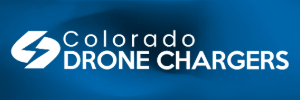The manual states batteries have to be discharged to between 10 and 20% before taking them on an airplane. I have two questions for the community :
(1) Can someone explain why this is necessary and what are the risks?
(2) Do you follow the rule, any experiences good or bad?
For a couple of months now, I've been taking my Inspire on various assignments around Europe and I've always followed this rule. However :
* The process gets tedious, fast.
* Adds (unnecessary?) discharge cycles to the batteries.
* Increases prep time before leaving.
* Increases lead time between arrival and ready-to-fly, especially when the shooting location is somewhere remote with no power outlets available. (Checklist item #1 after getting all the gear in the car : hook up the inverter and start charging. One battery at at time...)
* Using the Inspire on a travel day makes for quite some battery management, because otherwise you end up both trying to make check-in time and finding a suitable spot for discharge flight. (We use the craft as an add-on to regular shooting, and the aerial part is always at operator discretion - depending on local conditions, weather, time left etc. This means everything might be charged up and ready to go, only to decide not to fly.) Where we used to make filming appointments with little margin for getting back to the airport, I now find myself adding extra hours to the planning just for this - or just decide in advance only to charge one battery, maybe not fly at all.
My cameraman, traveling with his fully charged battery packs (Li-Ion packs for his Sony x500, both carry-on and checked) just looks at this and laughs... :-(
Mostly because of his ridicule, I'd like to understand a bit more about this -) so I would welcome any feedback you have to offer.
-) so I would welcome any feedback you have to offer.
(Note for The Editor : flew the ac at locations ranging from the north of Sweden to the south of Italy, the west of the UK to the east of Germany... without any compass calibration and with zero problems. Am now a firm subscriber to the leave-it-alone school of thought
(1) Can someone explain why this is necessary and what are the risks?
(2) Do you follow the rule, any experiences good or bad?
For a couple of months now, I've been taking my Inspire on various assignments around Europe and I've always followed this rule. However :
* The process gets tedious, fast.
* Adds (unnecessary?) discharge cycles to the batteries.
* Increases prep time before leaving.
* Increases lead time between arrival and ready-to-fly, especially when the shooting location is somewhere remote with no power outlets available. (Checklist item #1 after getting all the gear in the car : hook up the inverter and start charging. One battery at at time...)
* Using the Inspire on a travel day makes for quite some battery management, because otherwise you end up both trying to make check-in time and finding a suitable spot for discharge flight. (We use the craft as an add-on to regular shooting, and the aerial part is always at operator discretion - depending on local conditions, weather, time left etc. This means everything might be charged up and ready to go, only to decide not to fly.) Where we used to make filming appointments with little margin for getting back to the airport, I now find myself adding extra hours to the planning just for this - or just decide in advance only to charge one battery, maybe not fly at all.
My cameraman, traveling with his fully charged battery packs (Li-Ion packs for his Sony x500, both carry-on and checked) just looks at this and laughs... :-(
Mostly because of his ridicule, I'd like to understand a bit more about this
(Note for The Editor : flew the ac at locations ranging from the north of Sweden to the south of Italy, the west of the UK to the east of Germany... without any compass calibration and with zero problems. Am now a firm subscriber to the leave-it-alone school of thought




